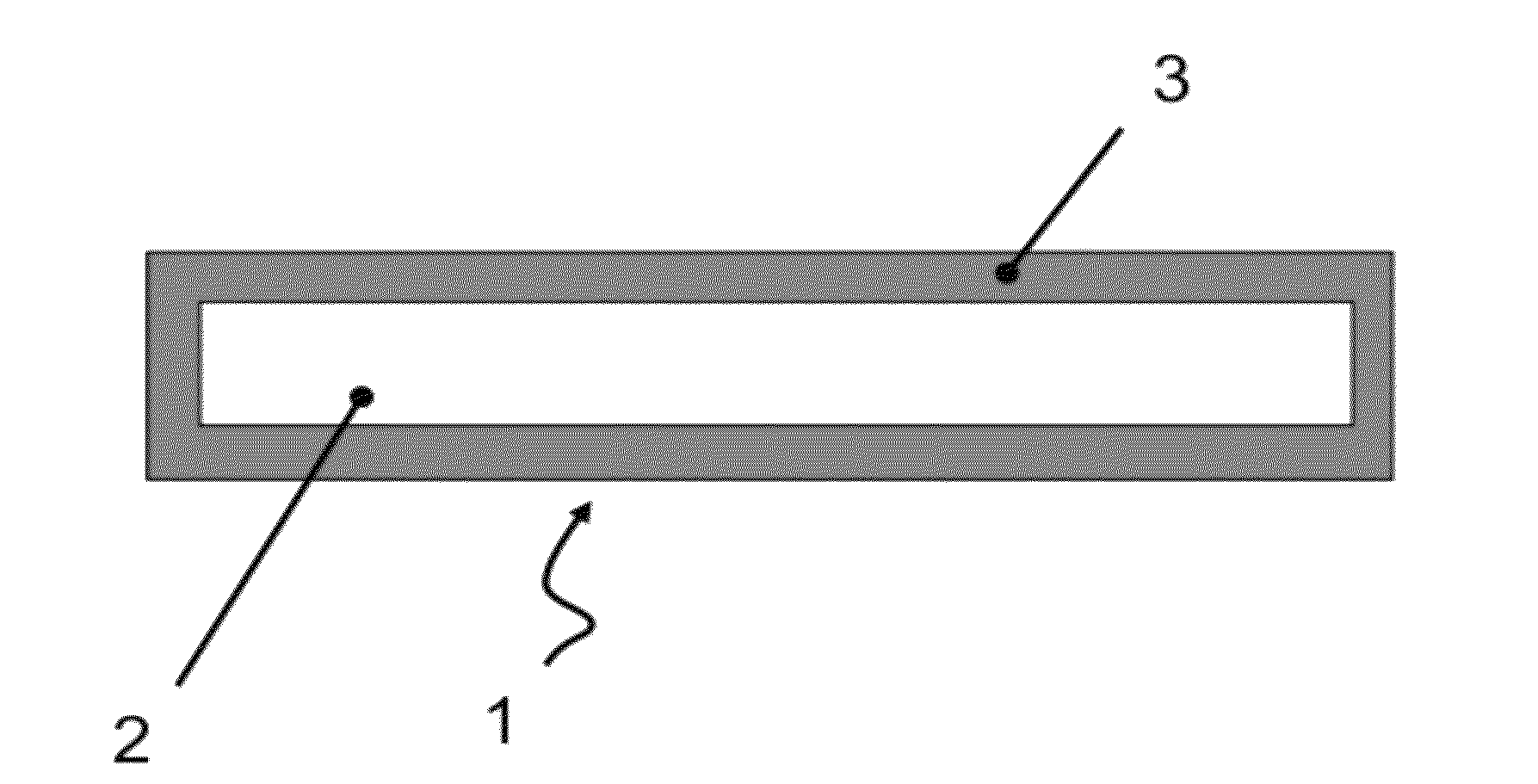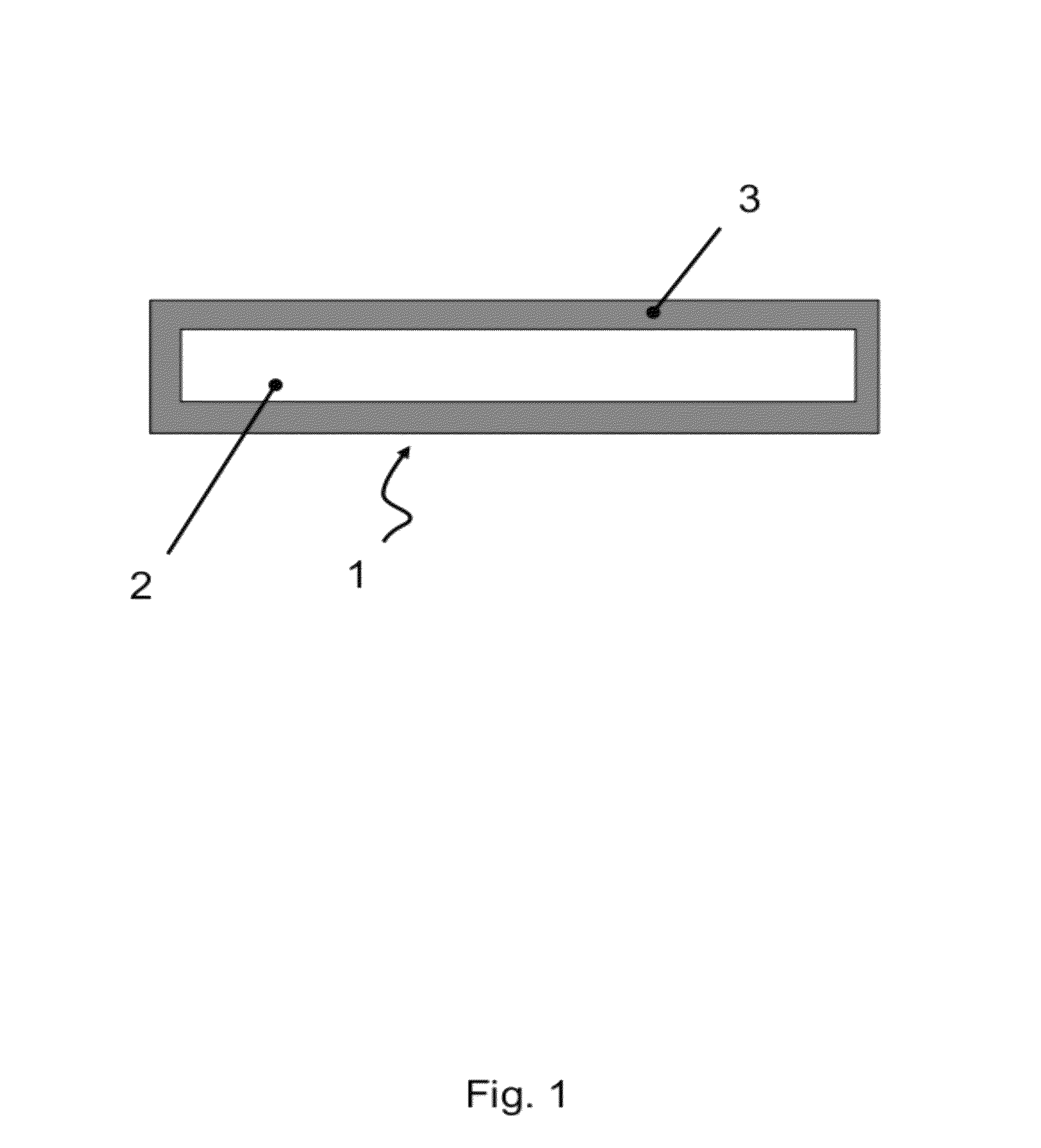Polyurethane panel
a polyurethane and panel technology, applied in the field of polyurethane panels, can solve the problems of requiring additional components, affecting the quality of polyurethane panels, so as to reduce the risk of fracturing and/or breaking
- Summary
- Abstract
- Description
- Claims
- Application Information
AI Technical Summary
Benefits of technology
Problems solved by technology
Method used
Image
Examples
example 1
[0113]In one exemplary embodiment, FIG. 2 shows a water feature (10) made from an embodiment of the coated polyurethane panel according to the invention. Preferably, the water feature (10) according to this embodiment is first cut from Aptane™ P258 / B900 Multipanel. Structures requiring curves (11) are deformed into shape using heat. The water feature (10) is then assembled by fixing flat structures (12) and curved structures (11) together using appropriate adhesives and fixings. The assembled water feature is then sprayed with Tuff Stuff™ polyurethane elastomer and the coating allowed to set.
[0114]Alternatively, the water feature (10) according to this embodiment may be cut from Aptane™ P258 / B900 Multipanel, where structures requiring curves (11) are deformed into shape using heat. The separate pieces (11 and 12) are then sprayed with Tuff Stuff™ polyurethane elastomer, and the coating allowed to set. The water feature (10) can be shipped flat-packed which reduces transportation cos...
example 2
[0116]In another exemplary embodiment, FIGS. 3 and 4 show a planter boxes (20 and 30, respectively) made from an embodiment of the coated polyurethane panel according to the invention.
[0117]Similarly to Example 1, pieces which form the planter box (20 or 30) are cut from a sheet of Aptane™ P258 / B900 Multipanel, preferably 25 mm thick. Walls of the planter boxes (21 and 31, respectively) are assembled using appropriate fixings and adhesives. According to the embodiments shown, the planter boxes may include a top edge (22 and 32, respectively) made from 100 mm×500×5 mm thick Aluminium Angle which is mitred and welded. The Aluminium Angle adds strength to the top edge as well as providing an aesthetically pleasing finish. The boxes are then sprayed with at least a 1 mm thick layer of Tuff Stuff™ polyurethane elastomer.
[0118]Assembly of the planter boxes (20 or 30) can occur onsite using coated polyurethane panel pieces shipped flat-packed and appropriate adhesives and fixings as descri...
example 3
[0120]In yet a further exemplary embodiment, FIGS. 5 and 6 show housing made from an embodiment of the coated polyurethane panel according to the invention. The unit (50) (or ‘Pod’) shown can be used to construct modular (‘Podula’) housing in which several Pods are attached together. Such housing can be either temporary or permanent.
[0121]The embodiment of the Pod (50) shown includes the following components:[0122]An Aptane™ P258 / B900 Multipanel of 1200 mm×2400 mm used as the floor (51).[0123]1200 mm×2400 mm Aptane™ P258 / B900 Multipanels used to form the walls (52, 55 and 56). The tip of the arc (53) is 2400 mm high, and 6 m in length.[0124]Door frame and supports (54) are fabricated from stainless steel.[0125]Support angle to base (57) is fabricated from 50 mm×50 mm×1 mm galvanised steel.
[0126]The back (55) and front (56) walls are preferably fabricated 25 mm thick panels, whereas the floor (51) and side walls (52) are preferably fabricated from 16 mm thick panels. The panels may b...
PUM
| Property | Measurement | Unit |
|---|---|---|
| temperature | aaaaa | aaaaa |
| temperature | aaaaa | aaaaa |
| temperature | aaaaa | aaaaa |
Abstract
Description
Claims
Application Information
 Login to View More
Login to View More - R&D
- Intellectual Property
- Life Sciences
- Materials
- Tech Scout
- Unparalleled Data Quality
- Higher Quality Content
- 60% Fewer Hallucinations
Browse by: Latest US Patents, China's latest patents, Technical Efficacy Thesaurus, Application Domain, Technology Topic, Popular Technical Reports.
© 2025 PatSnap. All rights reserved.Legal|Privacy policy|Modern Slavery Act Transparency Statement|Sitemap|About US| Contact US: help@patsnap.com



